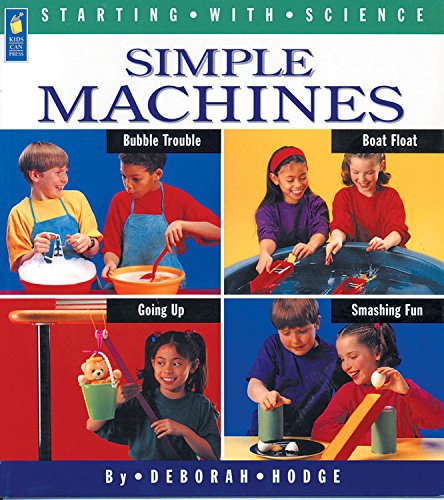-
What's Inside You?
Susan Meredith
Paperback (Usborne Pub Ltd, Dec. 1, 2006)Provides information about the human body, with sections on eating, breathing, blood, skin, senses, the brain, muscles, and the cells that make up the body. N
N
-
Why Do Tigers Have Stripes?
Helen Edom, Robert Morton
Paperback (Usborne Pub Ltd, June 1, 2006)Explains how skin and fur colors and patterns help animals escape predators, hunt prey, and find a mate. P
P
-
What's Under the Sea
Sophy Tahta, Stuart Trotter
Paperback (Usborne Pub Ltd, June 1, 2006)Introduces the oceans of the world, providing information on fish, coral reefs, polar seas, divers, underwater vessels, the seabed, oil drilling, and the use and abuse of the oceans. K
K
-
Why Do People Eat
Kate Needham, Annabel Spenceley, Kuo Kang Chen, Lindy Dark, Non Figg
Paperback (Usborne Pub Ltd, Dec. 1, 2006)Using simple text and illustrations, explains why people need food, where food comes from, and how the body uses it. N
N
-
Starting Point Science
Susan Mayes, Richard Deverell, Mike Pringle
Hardcover (Usborne Pub Ltd, July 1, 2002)STARTING POINT SCIENCE, VOLUME 1 W
W
-
What Makes You Ill
Mike Unwin, Kate Woodward, Annabel Spenceley, Kuo Kang Chen, Non Figg
Paperback (Usborne Pub Ltd, Dec. 1, 2006)Introduces various types of illness and their causes and discusses germs, allergies, accidents, preventing disease, and healthy living. K
K
-
What Makes a Flower Grow?
Susan Mayes
Paperback (Edc Pub, June 1, 1989)Introduces how flowers grow, detailing how a flower originates in a seed and how insects and flowers benefit from each other. L
L
-
Life on Earth
Susan Mayes
Hardcover (Usborne Pub Ltd, April 1, 2002)Hardbound with Colorful Cover V
V
-
What's Inside You?
Susan Meredith
Paperback (Usborne Pub Ltd, May 1, 1991)Where does your food go? What is skin for? Why do you breathe? In clear and simple language, this colorful book describes each part of the body and the job it does, from individual cells to muscles, skin and bones. It also describes the different kinds of food the body needs and answers the questions young children ask, such as "What are hiccups?". ("Explains the human body simply and clearly... It's also packed with the fascinating facts that children love." Parents magazine) Paperback. Pages: 24 D
D
-
Solids, Liquids and Gases
Ontario Science Centre, Ray Boudreau
Paperback (Kids Can Press, Aug. 12, 1995)Solids, Liquids and Gases has 13 experiments carefully chosen by the Ontario Science Centre. With minimal supervision, children can explore the three states of matter, what makes each state unique and how matter changes from a solid to a liquid to a gas through evaporation, condensation, melting and freezing. Filled with bright photographs, the Starting with Science series provides valuable lessons about basic science for five to eight year olds. M
M
-
Simple Machines
Deborah Hodge, Ray Boudreau
Paperback (Kids Can Press, Jan. 1, 1998)Thirteen experiments about the six simple machines -- the lever, wheel and axle, pulley, inclined plane, wedge and screw -- teach kids about basic science. Full-color photographs and step-by-step instructions clearly explain each activity, so that kids can make the most of the machines with minimal help from adults. Part of the Starting with Science series, Simple Machines encourages children to have fun as they learn basic science and fills a need for primary-level science resources. K
K
-
Where Do Babies Come From?
Susan Mayes
Paperback (Usborne Pub Ltd, March 1, 1992)-- Introduces young children to fundamental aspects of nature, science and technology-- Inspired by the questions children ask about the world around them-- Simple text and detailed illustrations answer questions in clear, step-by-step stages C
C